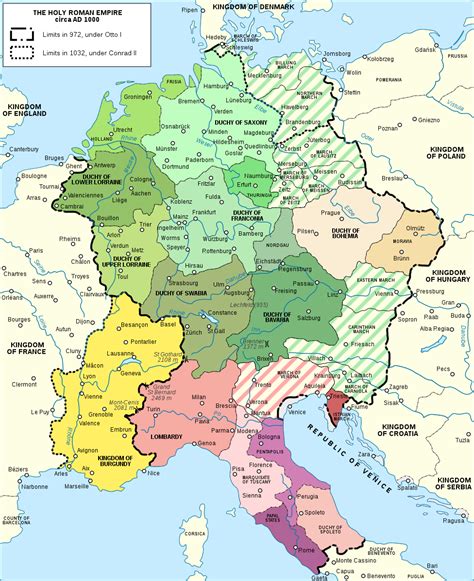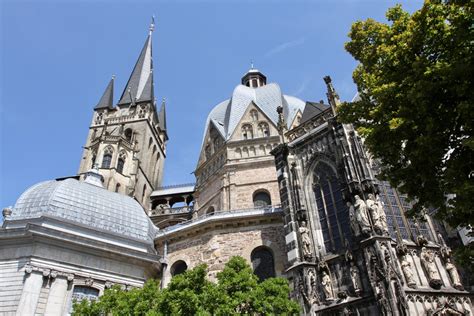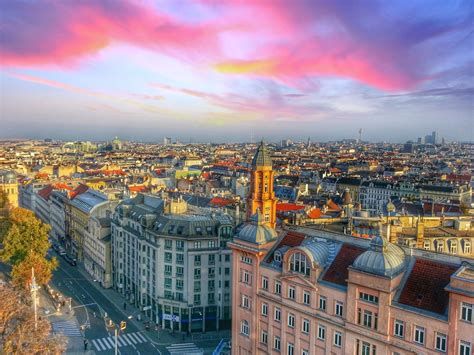The Holy Roman Empire, a complex political entity that existed from 800 to 1806, did not have a single, fixed capital throughout its history. Instead, the empire’s seat of power shifted between several important cities, each playing a crucial role in shaping the empire’s political and cultural landscape. This article delves into the various capitals of the Holy Roman Empire, exploring their historical significance and the reasons behind their prominence. From the ancient city of Rome to the medieval stronghold of Aachen, the Habsburg stronghold of Vienna, and the cultural center of Prague, we’ll uncover the fascinating story of how these cities rose to become the heart of one of Europe’s most influential empires.
The concept of a capital city in the Holy Roman Empire was fluid and often dependent on the ruling emperor’s preferences and political circumstances. Unlike modern nation-states with fixed capitals, the Holy Roman Empire’s seat of power was closely tied to the emperor’s court and administration. This unique characteristic reflected the empire’s decentralized nature and the complex relationships between the emperor, princes, and other powerful nobles. As we explore each of the empire’s major capitals, we’ll gain insight into how these cities shaped and were shaped by the empire’s political, cultural, and religious dynamics. From coronation sites to administrative centers, these capitals played pivotal roles in the empire’s long and eventful history.
The Shifting Capitals of the Holy Roman Empire

The Holy Roman Empire, a complex political entity that existed for nearly a millennium, was characterized by its ever-changing seats of power. Unlike other empires with fixed capitals, the Holy Roman Empire saw its center of authority shift numerous times throughout its history, reflecting the decentralized nature of its governance and the evolving political landscape of medieval and early modern Europe.
The concept of a ‘capital’ in the Holy Roman Empire was fluid, often depending on the residence of the current emperor or the location of important imperial institutions. This unique feature set the Holy Roman Empire apart from its contemporaries and contributed to its longevity and adaptability. Some of the most significant capitals included:
- Aachen: The initial seat of power under Charlemagne
- Rome: The symbolic heart of the empire
- Frankfurt: A crucial location for imperial elections
- Prague: The imperial seat during the reign of Charles IV
- Vienna: The final and longest-serving capital
The shifting nature of the imperial capital was not merely a matter of convenience but often reflected broader political and cultural changes within the Holy Roman Empire. As power dynamics evolved and new dynasties rose to prominence, the center of imperial authority would often follow suit. This flexibility allowed the empire to adapt to changing circumstances and maintain its relevance in European affairs for centuries, despite facing numerous challenges and transformations throughout its existence.
Aachen: Charlemagne’s Imperial Seat

Aachen, a city steeped in history and grandeur, holds a special place in the annals of the Holy Roman Empire. As the imperial seat of Charlemagne, the first Holy Roman Emperor, Aachen became the epicenter of power and culture during the early years of this vast medieval empire. Charlemagne’s decision to establish his court in Aachen in the late 8th century marked the beginning of the city’s transformation into a symbol of imperial might and Christian devotion.
The crowning jewel of Aachen during Charlemagne’s reign was undoubtedly the Palatine Chapel, a masterpiece of Carolingian architecture that still stands today as part of the Aachen Cathedral. This octagonal chapel, inspired by Byzantine and Roman designs, served as the private church of the emperor and became the coronation site for many subsequent rulers of the Holy Roman Empire. The chapel’s magnificent dome, adorned with intricate mosaics and supported by massive marble columns, exemplified the fusion of religious devotion and imperial power that characterized Charlemagne’s rule.
Aachen’s importance as the capital of the Holy Roman Empire extended beyond its architectural marvels. The city became a hub of intellectual and cultural activity, attracting scholars, artists, and craftsmen from across Europe. Charlemagne’s court in Aachen was the birthplace of the Carolingian Renaissance, a period of cultural and educational revival that laid the foundation for the later European Renaissance. The emperor’s palace complex, which included baths, a hunting park, and administrative buildings, further cemented Aachen’s status as the nerve center of the empire.
Vienna: The Final Capital of the Empire

As the Holy Roman Empire entered its final centuries, Vienna emerged as its de facto capital, solidifying its position as the empire’s political and cultural epicenter. This magnificent city, nestled along the banks of the Danube River, became the seat of power for the Habsburg dynasty, who ruled the Holy Roman Empire for much of its later history. The transition of the imperial capital to Vienna marked a significant shift in the empire’s geopolitical focus, reflecting the changing dynamics of European politics and the growing influence of the Habsburg territories.
Vienna’s rise to prominence as the capital of the Holy Roman Empire can be attributed to several factors, including its strategic location, cultural significance, and the political maneuvering of the Habsburg rulers. The city’s position at the crossroads of major trade routes made it an ideal center for commerce and diplomacy, while its rich artistic and intellectual traditions attracted scholars, artists, and thinkers from across Europe. Under Habsburg rule, Vienna underwent a remarkable transformation, with the construction of grand palaces, impressive baroque churches, and expansive public spaces that reflected the empire’s power and prestige.
The reign of Emperor Maximilian I (1493-1519) marked a crucial turning point in Vienna’s status within the Holy Roman Empire. During his rule, Maximilian initiated a series of administrative reforms that centralized imperial governance in Vienna, effectively making it the empire’s administrative capital. This trend continued under subsequent Habsburg emperors, particularly during the reigns of Charles V and Ferdinand I, who further consolidated Vienna’s position as the empire’s political nerve center.
Frequently Asked Questions

The capital of the Holy Roman Empire was primarily located in Aachen, Germany, especially during the reign of Charlemagne.Aachen was significant as it served as Charlemagne's favored residence and became the site of his coronation as Emperor.Yes, over time, the capital's importance shifted to cities like Frankfurt and Vienna, particularly during different periods and under various emperors.Vienna became an important political and cultural center of the Holy Roman Empire, especially from the late medieval period onward.The vast geography of the Holy Roman Empire meant that different regions had their own centers of power, leading to various cities being considered 'capitals' at different times.The Imperial Diet was a significant assembly of representatives from the various territories of the empire, often held in different cities, which played a crucial role in the governance of the empire.The legacy includes the influence of its various capitals on European political structures and culture, with cities like Vienna continuing to play important roles in European history.


